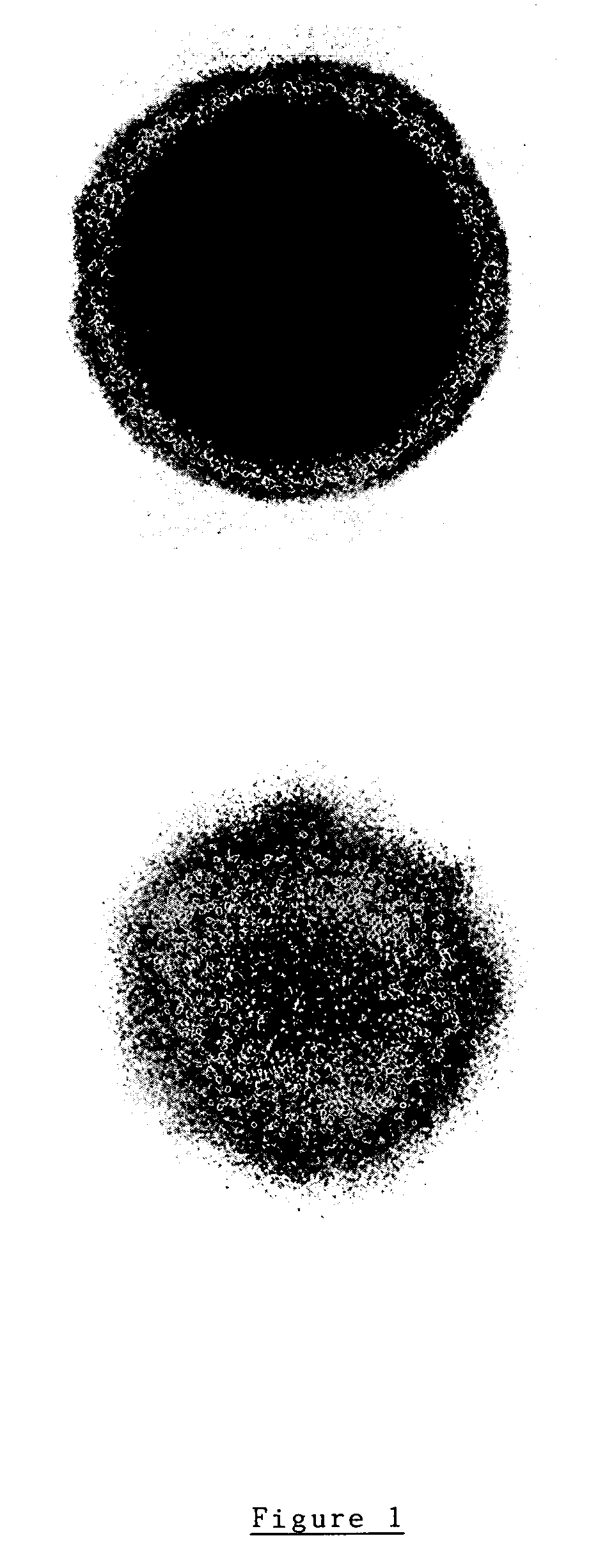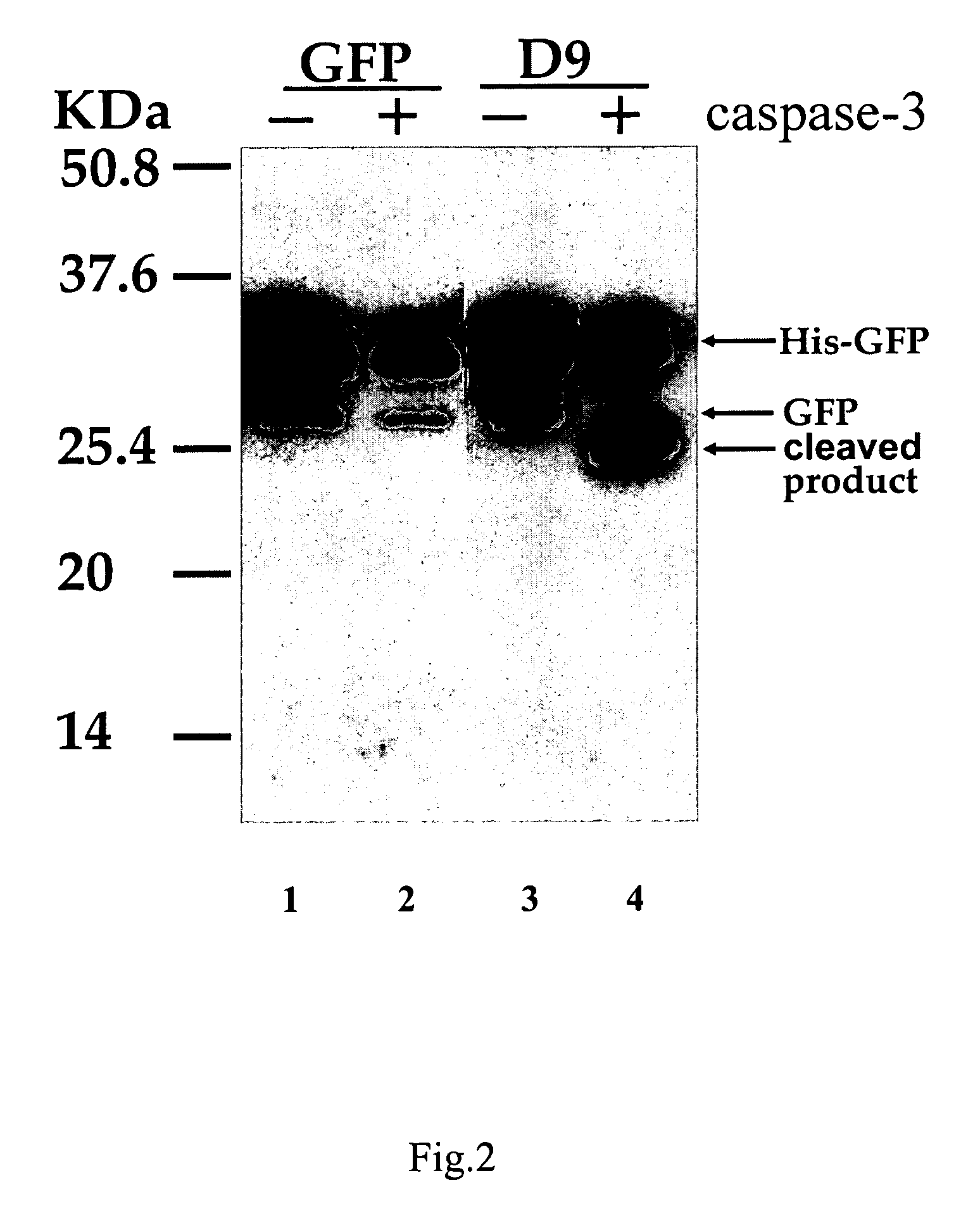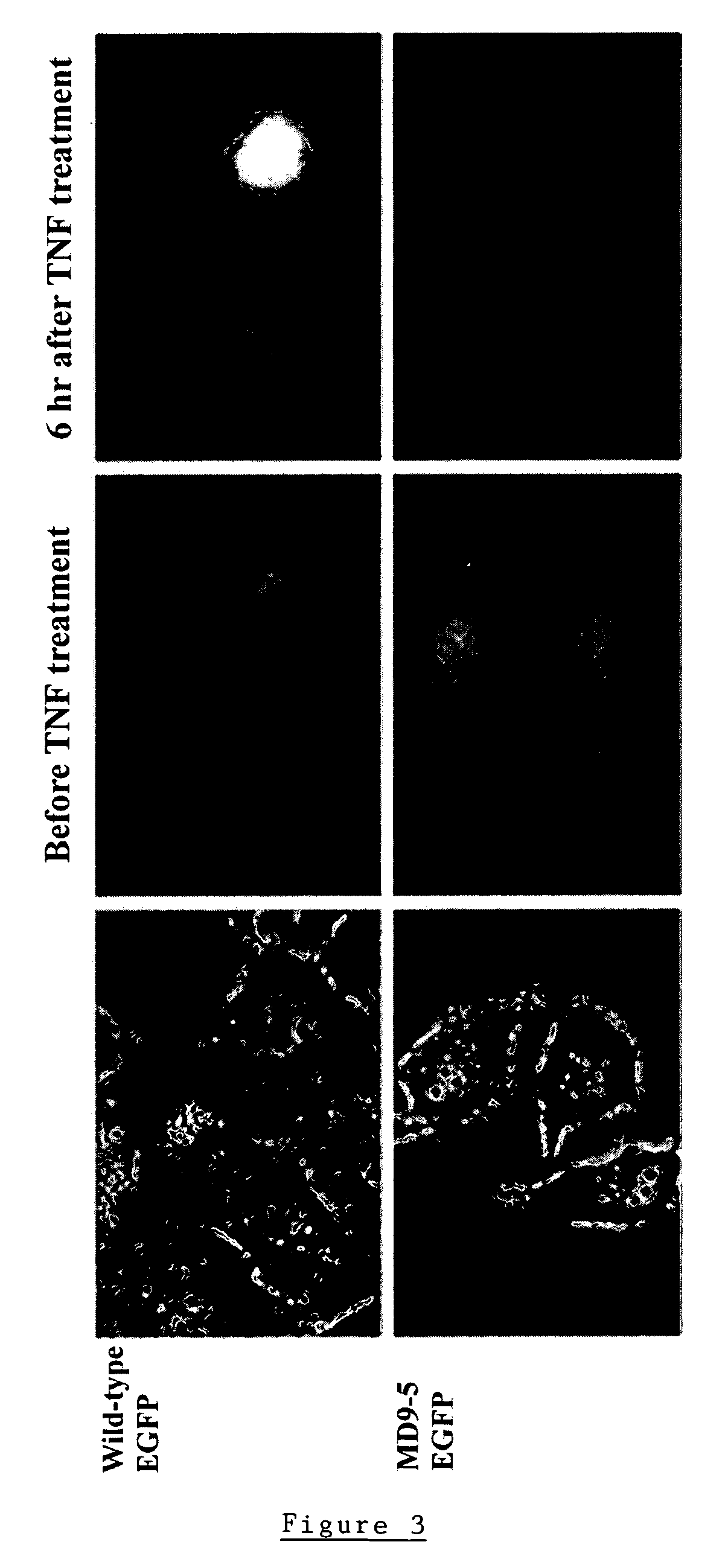Modified fluorescent proteins for detecting protease activity
a fluorescent protein and protease technology, applied in the field of modified fluorescent proteins, can solve the problems of failure of programmed cell death, large damage to the body, and methods that, however, have limitations, and achieve the effect of simple, accurate and easy-to-assay
- Summary
- Abstract
- Description
- Claims
- Application Information
AI Technical Summary
Benefits of technology
Problems solved by technology
Method used
Image
Examples
example 1
Materials and Methods
Cell Lines and Culture Media
[0032]Escherichia coli BL21-DE-3 (Invitrogen, CA, USA) and DH5α (Life Technologies Inc., USA) were grown either in liquid LB (Luria-Bertani) medium or on a solid LB agar plate. The Oxoid tryptone and yeast extract for preparing LB culture media were obtained from Unipath Ltd. (Basingstoke, Hampshire, England). The select agar for making LB agar plates was obtained from Life Technologies Inc. (Paisley, Scotland). The HeLa cells were grown in MEM (Minimum Essential Medium) supplemented with 10% FBS (Fetal Bovine Serum), 100 U / ml penicillin, 100 U / ml streptomycin (Life Technologies Inc., Grand Island, N.Y., USA) and 0.37% NaHCO3 (BDH Laboratory Supplies, Poole, England).
Modified Site-Directed Mutagenesis
[0033]The essential procedures of site-directed mutagenesis are described in the following: Two complementary oligonucleotide primers (see for example SEQ ID NOs: 1 and 3) containing DNA sequence encoding amino acids of SEQ ID NO: 4 in th...
example 2
[0079]To specifically determine protease (e.g. caspases) activity in sample cells of Example 1, the sample cells have their emission and / or excitation spectra determined. This is then compared to the same emission / excitation spectra determined for cells of Example 1 having a known protease activity, and the results then correlated to determine protease activity in the sample cells.
example 3
[0080]To determine a change in protease (e.g. caspase) activity, the fluorescent intensity of sample cells is determined at a first timepoint using an imaging device. At a second timepoint the same fluorescent image is determined for the same cells. The results at the first and second timepoints are then compared and correlated to determine any change in protease activity.
[0081]To determine the rate of change of protease activity, at least one more timepoint must be added. Results can be standardised by comparing them to similarly obtained results for or cells having a known protease activity.
PUM
| Property | Measurement | Unit |
|---|---|---|
| temperature | aaaaa | aaaaa |
| temperature | aaaaa | aaaaa |
| temperature | aaaaa | aaaaa |
Abstract
Description
Claims
Application Information
 Login to View More
Login to View More - R&D
- Intellectual Property
- Life Sciences
- Materials
- Tech Scout
- Unparalleled Data Quality
- Higher Quality Content
- 60% Fewer Hallucinations
Browse by: Latest US Patents, China's latest patents, Technical Efficacy Thesaurus, Application Domain, Technology Topic, Popular Technical Reports.
© 2025 PatSnap. All rights reserved.Legal|Privacy policy|Modern Slavery Act Transparency Statement|Sitemap|About US| Contact US: help@patsnap.com



